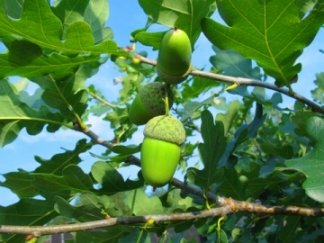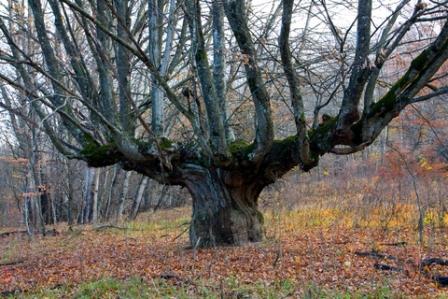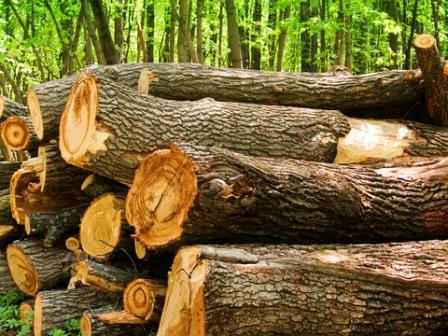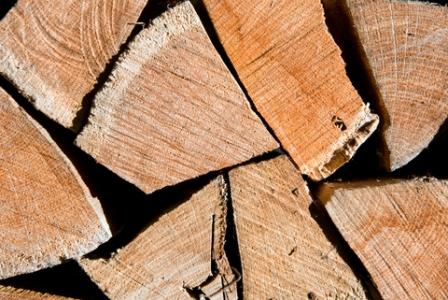Firewood Types: Oak
Firewood Types : English Oak, Quercus Robor, is one of the finest trees in the English countryside. Oak firewood is prize above all for its density and produces outstanding building timbers.
When fruiting oaks are amoung the easiest trees to identify because of their characteristic nuts - the acorn - but few people realise quite how many different species of oak there are. In the UK we have "English Oak", quercus robor, which is found singly in fields and hedgerows, as standards within woodland and throughout parks and gardens.
Ancient oak trees were often pollarded for fuel wood and sometimes are indicators of ancient land boundaries. The specimen below is likely many hundred of years old, and will have been cut for fuel wood many times over its life. By pollarding, rather than coppicing, the new shoots emerge out of the reach of grazing animals, such as deer.
Oak Species
The leaves and acorns shown below are all from different species of oak trees. Depending on your location in the world there many be many species native to your area and your best way to identify them is to ask your neighbours.
 |
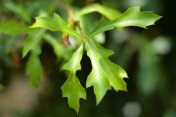 |
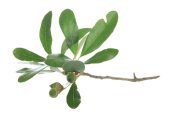 |
Here in the UK our most common oak is the English Oak, seen in the photo at the top of the page.
Different oak species have different firewood properties; some have stringy fibres and are harder to split, some are less dense, some prefer boggy or wet ground and the leaf shapes vary widely.
Oak Firewood
Key Ideas:
Oak is fabulous firewood but takes 3 years to season properly.
You will be disappointed if you try and burn it green; it is very dense and particularly hard to get going if not dry.
As a general rule oak firewood will be amoungst the best quality you will be able to obtain. Oak is a slow growing hard wood, exceptionally dense and very high in tannin content. The high tannin protects the wood from decay and fallen trees can last many decades before the quality of the wood for burning begins to degrade.
Due to its extreme density oak can be very slow to season, especially when in large log form. A rule of thumb is that wood seasons an inch per year it is in the dry (off the ground is the main thing) so a 3ft diameter log is unlikely to be fully seasoned within 20 years!
The logs in this pile are likely to go for lumber rather than firewood, but there will be plenty of branch wood and scraps going. Notice the characteristic bark of the english oak, a key identifying feature.
Obviously it is really important to split oak down to size soon after felling so that it can really begin seasoning.
In this picture you can also see the darker heart wood - notice how little sap wood there is, immediately below the bark. Heartwood is used for building so there is very little wastage from oak.
If you have large oak logs of good quality consider trying to sell them to plank up into boards or beams - wood workers will be looking for long straight trunks, with no knots, branches or blemishes. It is possible to hire a mobile saw mill for a day if you have a few logs to process. We may well do this ourselves in Elfric Wood in the near future.
Large trees usually have plenty of branch wood which can be cut to length and split for oak firewood.
Other Oak Facts
- The acorn crop, which is poisonous to some live stock such as horses, used to be harvested in English woodlands by pigs - they were turned out into the woods in the autumn. The right was known as "Pannage". The pigs were fattened up and the horses protected from accidental poisoning.
- Oak makes exceptional shingles for roofing - the high tannin content means split oak shingles can last 50 to 80 years before being replaced. This traditional woodland craft is making a slight come-back in the UK
- Oak used to be grown for its bark, which was used to tan leather. The oak was coppiced and younger stems were harvested and the bark peeled. In the UK there are still two traditional tanneries which use oak tanning.
Overall
Overall oak makes excellent firewood and some species are available throughout most of the world. Just remember to give it two year to season as it is so dense!
